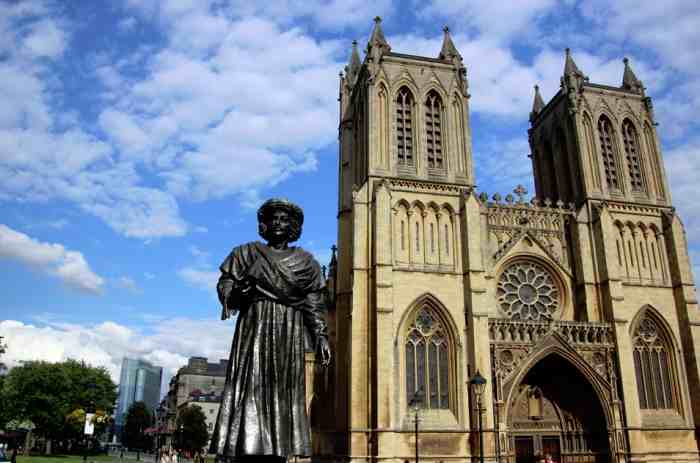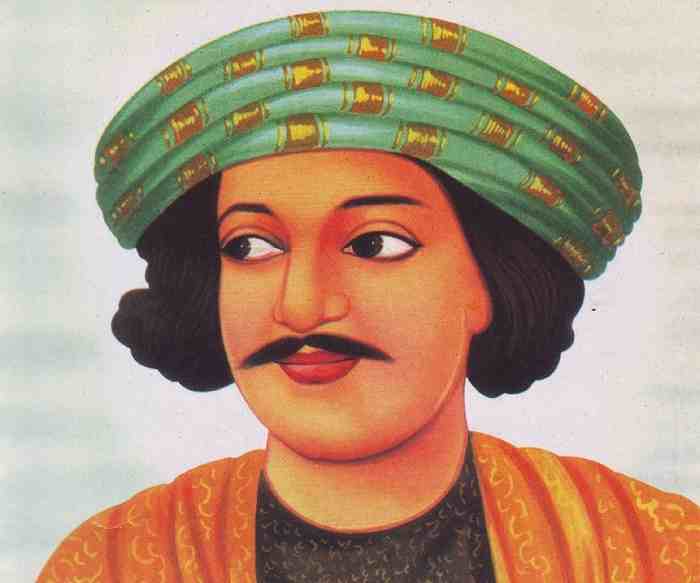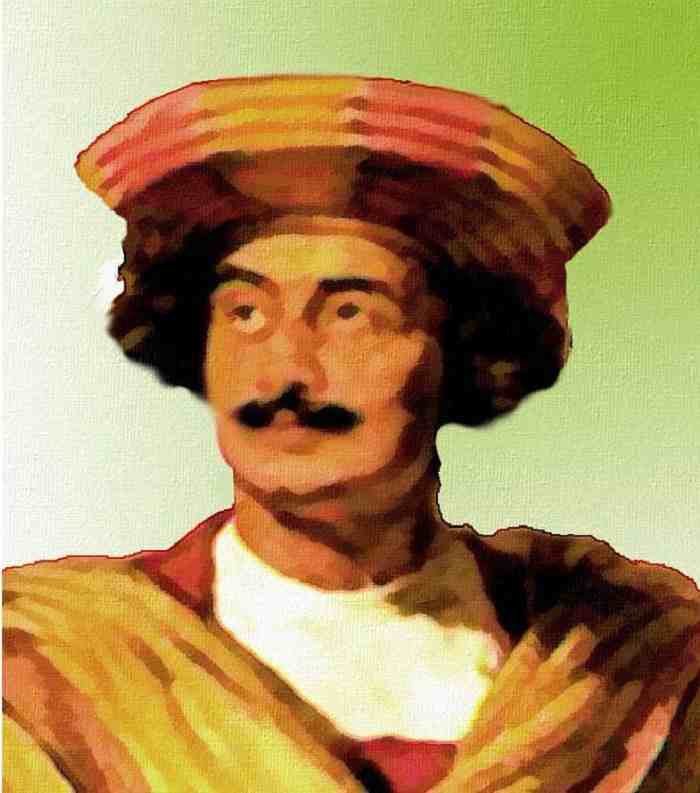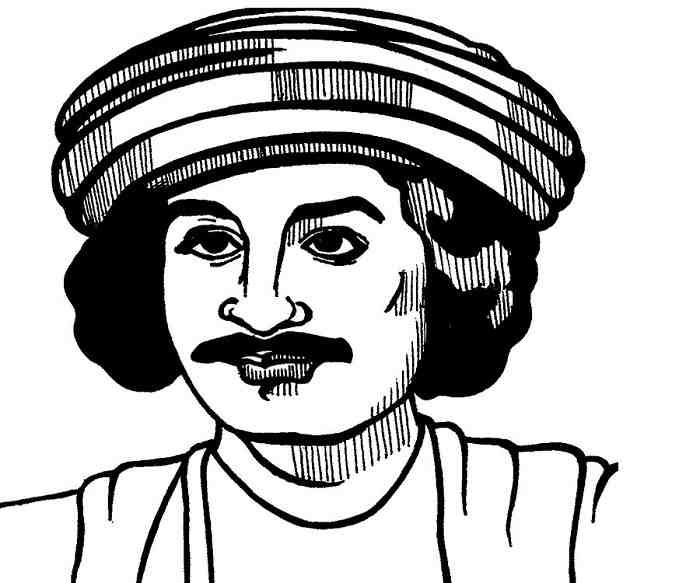Born: August 14, 1774
Place of Birth: Radhanagar village, Hoogly district, Bengal Presidency (now West Bengal)
Parents: Ramakanta Roy (Father) and Tarini Devi (Mother)
Spouse: Uma Devi (3rd wife)
Children: Radhaprasad and Ramaprasad
Education: Persian and Urdu in Patna; Sanskrit in Varanasi; English in Kolkata
Movement: Bengal Renaissance
Religious Views: Hinduism (early life) and Brahmoism (later in life)
Publications: Tuhfat-ul-Muwahhidinor A Gift to Monotheists (1905), Vedanta (1815), Ishopanishad (1816), Kathopanishad (1817), Moonduk Upanishad (1819), The Precepts of Jesus - Guide to Peace and Happiness (1820), Sambad Kaumudi - a Bengali newspaper (1821), Mirat-ul-Akbar - Persian journal (1822), Gaudiya Vyakaran (1826), Brahmapasona (1828), Brahmasangeet (1829) and The Universal Religion (1829).
Death: September 27, 1833
Place of death: Bristol, England
Memorial: Mausoleum at Arnos Vale Cemetery, Bristol, England

Raja Ram Mohan Roy is considered as the pioneer of modern Indian Renaissance for the remarkable reforms he brought in the 18th and 19th century India. Among his efforts, the abolition of the brutal and inhuman Sati Pratha was the most prominent. His efforts were also instrumental in eradicating the purdah system and child marriage. In 1828, Ram Mohan Roy formed the Brahmo Samaj, uniting the Bhramos in Calcutta, a group of people, who had no faith in idol-worship and were against the caste restrictions. The title 'Raja' was bestowed upon him by the Mughal emperor Akbar II, in 1831. Roy visited England as an ambassador of the Mughal King to ensure that Bentick's regulation banning the practice of Sati was not overturned. He died of meningitis in 1833 while residing in Bristol, England.
Early Life and Education
Raja Ram Mohan Roy was born on August 14, 1774 to Ramakanta Roy and Tarini Devi in Radhanagar village of Hoogly district, Bengal Presidency. His father was a wealthy Brahmin and orthodox individual, and strictly followed religious duties. At the age of 14 Ram Mohan expressed his desire to become a monk, but his mother vehemently opposed the idea and he dropped it.

Following the traditions of the time, Ram Mohan had a child marriage at age nine but his first wife died soon after the marriage. He was married for a second time at ten and had two sons from the marriage. After the death of his second wife in 1826, he married for a third time and his third wife outlived him.
Though his father Ramakanto was very orthodox but wanted his son to pursue higher education. He got Bengali and Sanskrit education from the village school. After that, Ram Mohan was sent to Patna to study Persian and Arabic in a Madrasa. Persian and Arabic were in high demand at that time as it was still the court language of the Mughal Emperors. He studied the Quran and other Islamic scriptures. Post completion of his studies in Patna, he went to Benares (Kashi) to learn Sanskrit. He mastered the language in no time and began studying scriptures, including the Vedas and Upanishads. He learnt English language at the age of 22. He read the works of philosophers like Euclid and Aristotle which helped shape his spiritual and religious conscience.
Post completion of his education, Rammohan entered the services of the East India Company as a clerk. He worked in the Collectorate of Rangpur, under Mr. John Digby. He was eventually promoted to be a Dewan, a post that referred to a native officer entrusted with the role of collecting revenues.
Social Reforms
During the late 18th century (what was known as the Dark Age), the society in Bengal was burdened with a host of evil customs and regulations. Elaborate rituals and strict moral codes were enforced which were largely modified, and badly interpreted ancient traditions. Practices like child marriage (Gouridaan), polygamy and Sati were prevalent that affected women in the society. The most brutal among these customs was the Sati Pratha. The custom involved self-immolation of widows at their husband’s funeral pyre. While the custom in its original form gave choice to the women to do so, it gradually evolved to be a mandatory custom especially for Brahmin and higher caste families. Young girls were married to much older men, in return for dowry, so that these men could have the supposed karmic benefits from their wives’ sacrifice as Sati. More often than not the women did not volunteer for such brutality and had to be forced or even drugged to comply.

Raja Ram Mohan Roy was abhorred by this cruel practice and he raised his voice against it. He spoke freely and took his views to the higher ups in the East India Company. His passionate reasoning and calm perseverance filtered through the ranks and ultimately reached the Governor General Lord William Bentinck. Lord Bentinck sympathised with Roy’s sentiments and intentions and amid much outcry from the orthodox religious community, the Bengal Sati Regulation or Regulation XVII, A. D. 1829 of the Bengal Code was passed. The act prohibited the practice of Sati Daha in Bengal Province, and any individual caught practicing it would face prosecution. Raja Ram Mohan Roy’s name is thus etched forever as a true benefactor of women not just for helping abolish the custom of Sati, but also raising his voice against child marriage and polygamy, while demanding equal inheritance rights for women. He was also a great opponent of the rigid caste divisions of his time.

Educational Reforms
Ram Mohan Roy was educated in traditional languages like Sanskrit and Persian. He came across English much later in life and learned the language to get better employment with the British. But a voracious reader, he devoured English literature and journals, extracting as much knowledge as he could. He realised that while traditional texts like Vedas, Upanishads and Quran provided him with much reverence for philosophy, his knowledge was lacking in scientific and rational education. He advocated the introduction of an English Education System in the country teaching scientific subjects like Mathematics, Physics, Chemistry and even Botany. He paved the way to revolutionizing education system in India by establishing Hindu College in 1817 along with David Hare which later went on to become one of the best educational institutions in the country producing some of the best minds in India. His efforts to combine true to the roots theological doctrines along with modern rational lessons saw him establish the Anglo-Vedic School in 1822 followed by the Vedanta College in 1826.
Religious Contributions
Ram Mohan Roy vehemently opposed the unnecessary ceremonialism and the idolatry advocate by priests. He had studied religious scriptures of different religions and advocated the fact that Hindu Scriptures like Upanishads upheld the concept of monotheism. This began his quest for a religious revolution to introduce the doctrines of ancient Vedic scriptures true to their essence. He founded the Atmiya Sabha in 1928, nd the first meeting of this new-found religion as held on August 20 that year. The Atmiya Sabha reorganised itself into the Brahma Sabha, a precursor organisation of the Brahmo Samaj. The primary facets of this new movement were monotheism, independence from the scriptures and renouncing the caste system. Brahmo religious practices were stripped bare of the Hindu ceremonialism and were set up following the Christian or Islamic prayer practices. With time, the Brahma Samaj became a strong progressive force to drive social reforms in Bengal, especially women education.
Journalistic Contributions
Ram Mohan Roy was a staunch supporter of free speech and expression. He fought for the rights of vernacular press. He also brought out a newspaper in Persian called 'Miratul- Akhbar' (the Mirror of News) and a Bengali weekly called 'Sambad Kaumudi' (the Moon of Intelligence). In those days, items of news and articles had to be approved by the Government before being published. Ram Mohan protested against this control by arguing that newspapers should be free and that the truth should not be suppressed simply because the government did not like it.
Death
Raja Ram Mohan Roy travelled to England in 1830 to request the Imperial Government to increase the royalty, received by the Mughal Emperor and to ensure that Lord Bentick's Sati Act would not be overturned. During his visit to United Kingdom, Raja Ram Mohan Roy died of meningitis at Stapleton in Bristol on 27 September, 1833. He was buried at the Arnos Vale Cemetery in Bristol. Recently, the British government has named a street in Bristol as 'Raja Rammohan Way' in the memory of Raja Ram Mohan Roy.
Legacy
Ram Mohan viewed education as a medium to implement social reforms so he came to Calcutta in 1815 and the very next year, started an English College by putting his own savings. He wanted the students to learn the English language and scientific subjects and criticized the government's policy of opening only Sanskrit schools. According to him, Indians would lag behind if they do not get to study modern subjects like Mathematics, Geography and Latin. Government accepted this idea of Ram Mohan and also implemented it but not before his death. Ram Mohan was also the first to give importance to the development of the mother tongue. His 'Gaudiya Byakaran' in Bengali is the best of his prose works. Rabindranath Tagore and Bankim Chandra also followed the footsteps of Ram Mohan Roy.



